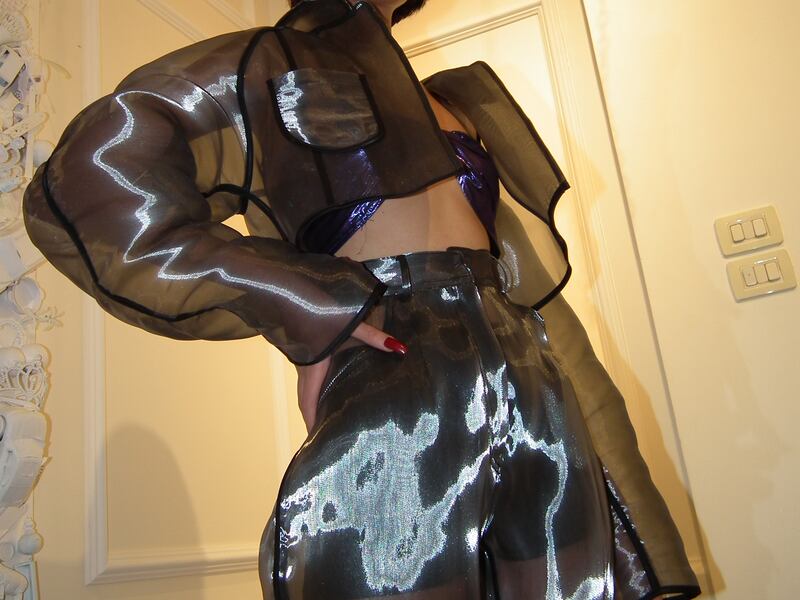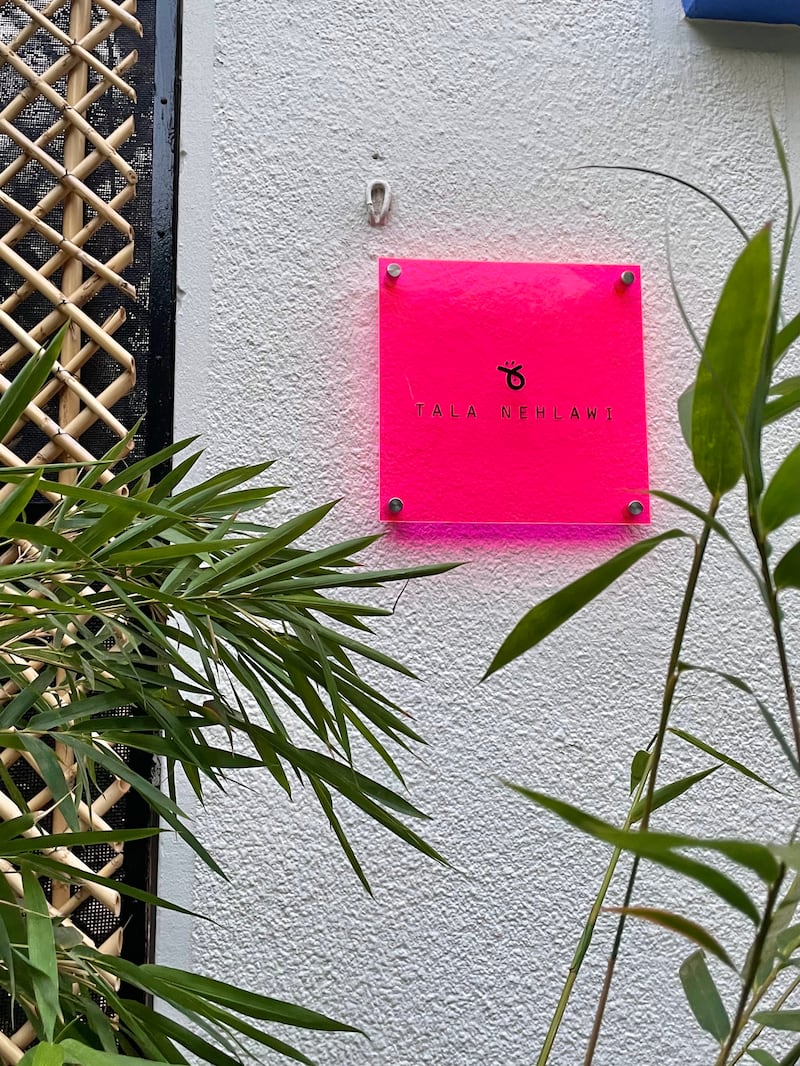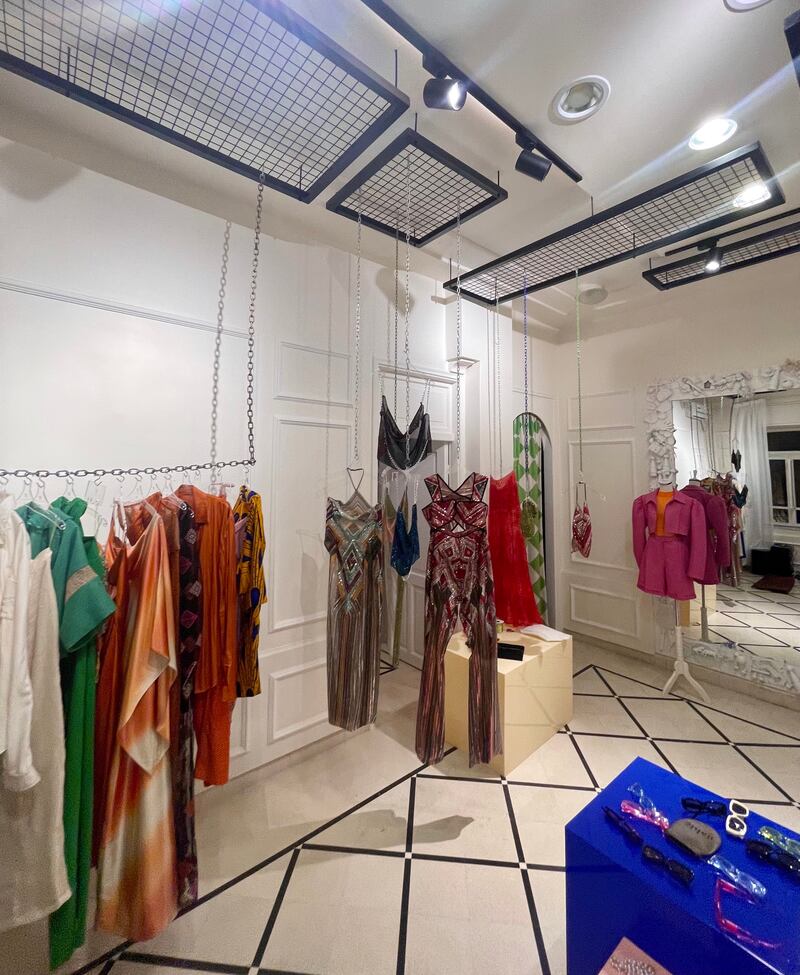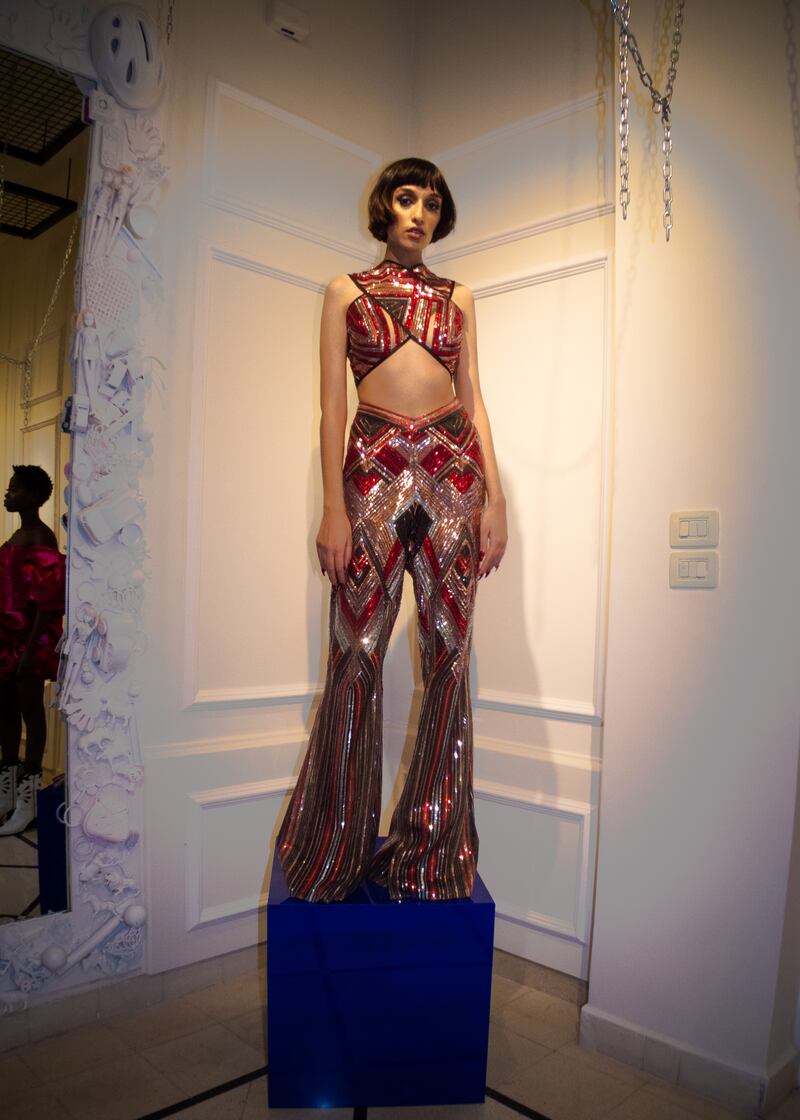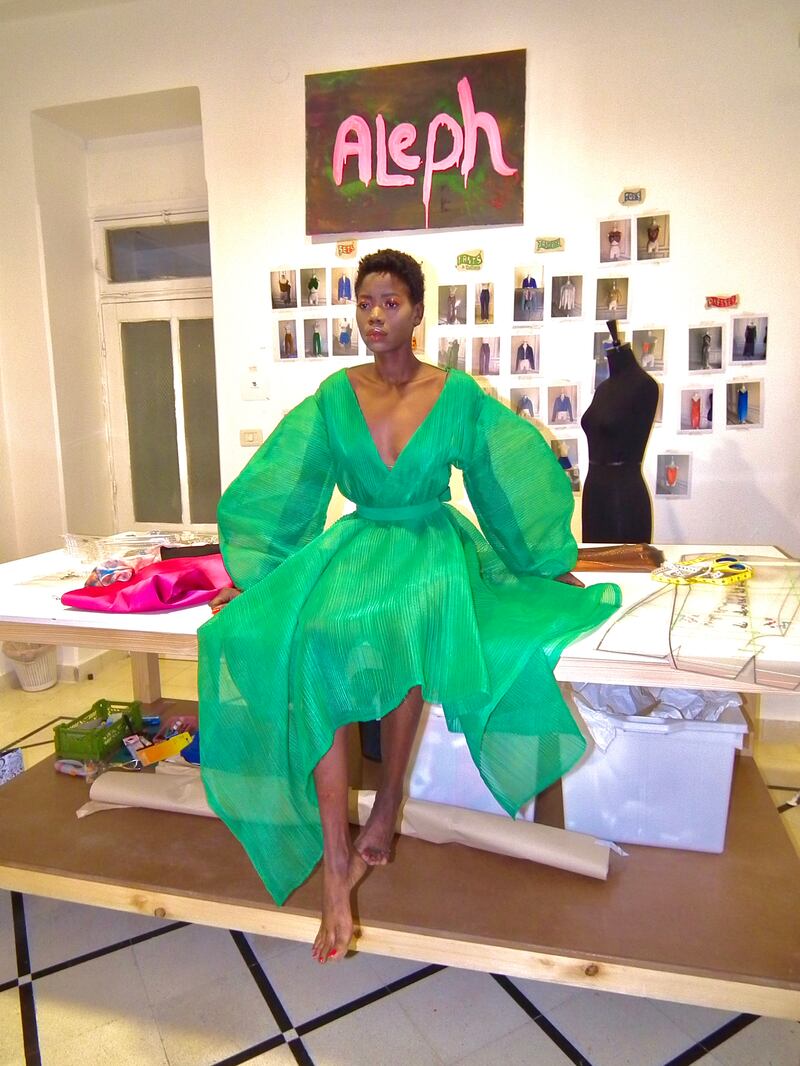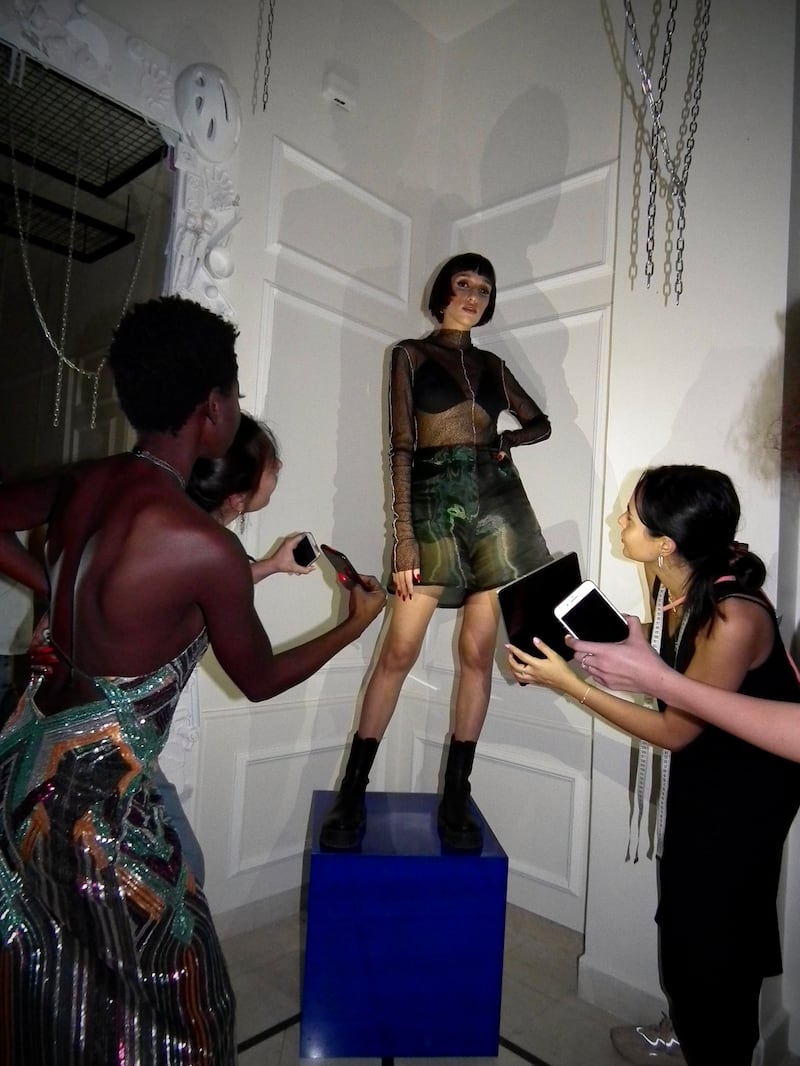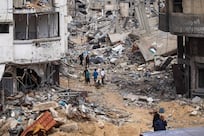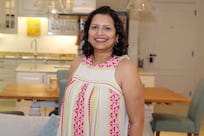In the upmarket Abu Remaneh district in Damascus, designer Tala Nehlawi, 26, walks gracefully through her contemporary design studio MaisonTN, which resembles a modern fashion hub yet also features traditional Damascene themes.
She pauses briefly to show off the latest in her bold projects – a reconstruction of the seven city gates of Damascus on a dress – before we’re interrupted with an all-too-frequent power cut. “You know what it’s like here, I’m really sorry,” she says in the darkness.
Despite the lack of electricity, MaisonTN is putting Syria’s fashion scene back on the map.
Nehlawi makes one made-to-measure item per person and has orders from Syria and all over the Middle East. In a brief period, she’s formed a small, cult-style following on Instagram. Part of the reason for such demand is that this is a unique set-up for Syria, and the contrasting elements of Nehlawi’s style transcend conventional themes.
The designer learnt her trade in Toronto, Canada for eight years before moving back to war-torn Syria in November 2020 to create a new wave in high-end fashion.
As with all risky endeavours, it was not easy at first, she says.
“I found the studio and started work on it, I felt driven to come back. I looked for textile makers – who are really talented and highly skilled in Syria – but they could see I was new in the industry and would always raise prices for fabrics.
“It was a real struggle at first, but now I’m used to it, I’ve learnt how to bargain.”
History, culture and architecture are central features in Nehlawi’s in-demand collections, which link near-obsolete Syrian craft techniques with western-themed modes of fashion.
Nehlawi is more than simply a fashion designer; she’s an artist, but she’s also an activist, trying to save parts of Syria’s heritage through modern design.
“Fashion in my eyes is literally wearable art, it’s as if you’re wearing a canvas and relates to how you express yourself. I want people to feel that when they wear my product or art, they feel they can conquer the world."
Some of the pieces in Nehlawi’s first Toronto collection, Damas, featured the phrase "enti al alam", which translates as “you are the world” in English. It’s a stark message supporting the empowerment of women.
The designs in her debut collection mimicked the geometrical patterns on certain antiques or Syrian copper plates.
Elements such as these thrust Nehlawi into the limelight in Toronto before she bravely headed back to her homeland to start again.
“Our history and way of life defines us. Look at the Damascene clogs, antique copper plates and pearl mosaics – this is what Damascus is known for.
“Who we are should be translated into fashion, it reflects layers of history whether it's Babylonian or Sumerians or Zenobia and Palmyra. Just look at how Syrian brocade is dying; Queen Elizabeth II wore a brocade dress for her wedding, but today it’s a dying industry here. We have to save it.”
Syria’s textile industry has been battered by the 10-year war, which has led to the majority of Aleppo’s fabric makers being put out of business with factories destroyed or relocated to Turkey.
One of the biggest difficulties Nehlawi faces is with quality and intricacy in a time of low-quality end-products, as the country’s industrial priorities lie with quantity rather than with a focus on the talent of the workers or craftspeople.
Nehlawi indicates towards a pair of mesmerising silk trousers embellished with images of the Battle of Hattin, taken from a painting showing the Saracen leader Salah al-Den and his warriors.
This is why demand for her collections have skyrocketed.
With expansion on the horizon, Nehlawi is not looking to limit her work to Syria, and is now preparing to release a spring/summer collection aimed at the Gulf fashion market.
This will be the first time she creates a collection with more than one piece.
“I always want to try to create something that I’ve never seen before. And with the spring/summer collection, it’s going to be more than 10 pieces for each unit for the first time ever.
“People who live in the Gulf have a deep appreciation for culture and history, whether it’s Middle Eastern handcrafts or the special textiles and fabrics, so the collection will be something influenced by Syria but in a modern way. It’s important to me that people feel they are wearing a piece of heritage. Basically, all the handwork that I can implement in my clothing I want to use in a super modern way.”
Nehlawi’s fashion philosophy is a sign that despite Syria’s difficulties, looking deeper into history can often be a solution for modern problems.
